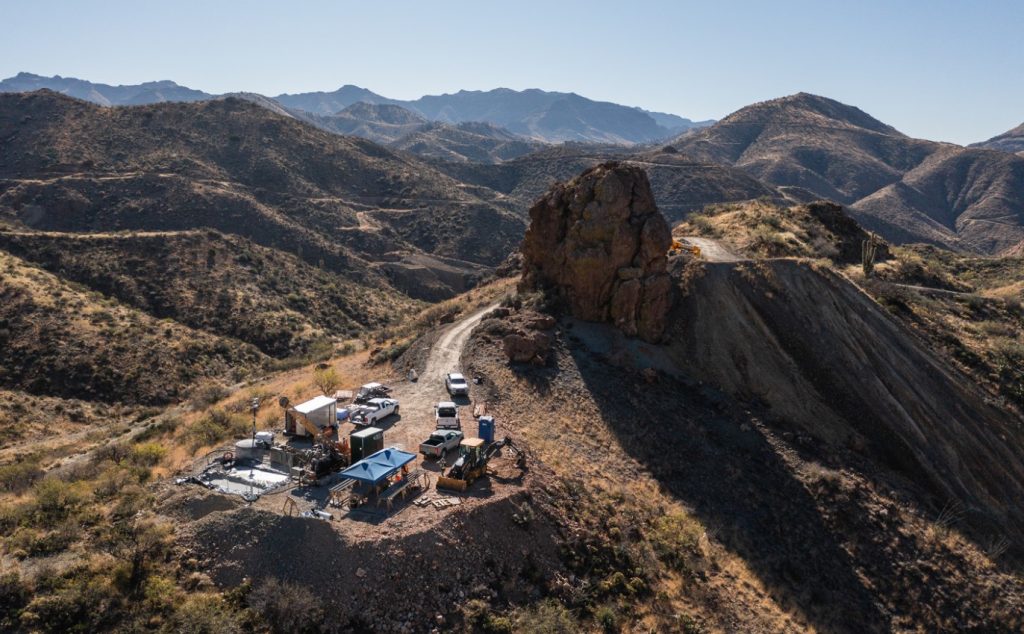Faraday Copper drills 0.37% copper over 72.01 metres at Copper Creek, Arizona

Faraday Copper Corp. [TSX-FDY] reported the results from the first two reconnaissance drill holes of its phase III program at the Copper Creek project, Arizona. The holes intersected a newly identified breccia at the Area 51 target (Starship), which has the potential to increase the open-pit mineral resource estimate (MRE). The company also provides Gold Program results from the Copper Prince breccia.
Paul Harbidge, President and CEO, commented, “It’s exciting to start the Phase III drill program with a new discovery that supports the district scale exploration upside at Copper Creek. The new Starship discovery is interpreted to be related to a different mineralized system that is distinct from the Copper Creek MRE. Our geophysical and spectral data demonstrates that the Starship breccia displays similar characteristics to other known mineralized breccias at Copper Creek and suggests it is located at the top of a larger hydrothermal system that is open both laterally and at depth. Follow up drilling during the Phase III program will target the lateral extension and deeper parts of this breccia complex.”
Highlights: Intersected 72.01 metres at 0.37% copper, 0.02 g/t gold and 1.35 g/t silver from 50.24 metres, including 25.06 metres at 0.78% copper, 0.03 g/t gold and 1.49 g/t silver from 50.24 metres in drill hole FCD-23-042 at the previously undrilled Starship breccia.
Drill hole FCD-23-042 also intersected 225.52 m of hydrothermal breccia from 57.00 m which contains the following additional mineralized intersections: 9.43 m at 0.47% copper, 0.08 g/t gold and 1.91 g/t silver from 175.57 m and 11.45 m at 0.26% copper, 0.03 g/t gold and 1.28 g/t silver from 249.89 m.
Drill hole FCD-23-041 intersected 29.86 m at 0.26% copper, 0.08 g/t gold and 2.10 g/t silver from 185.29 m, including 13.94 m at 0.42% copper, 0.13 g/t gold and 2.29 g/t silver from 185.29 m. This intersection is contained within a 102.13-metre-long breccia intersection from 131.12 m.
The new Starship discovery has the potential to increase the open pit mineral resource and the mineralization remains open laterally and at depth. Sulphide mineralogy and trace element geochemistry, together with geophysical evidence, suggest that the drill holes intercepted a shallow part of the mineral system, which includes a near-surface supergene enrichment zone.
Area 51 was identified as highly prospective by integrating airborne versatile time domain electromagnetic (VTEM) data and short wave infrared spectral data together with geological mapping and sampling. It is a broad southwest-northeast trending zone, approximately 800 m southeast of the Copper Creek mineral resource. More than 15 breccia occurrences along with southwest trending vein zones and widespread sericite alteration are documented over an area of approximately 1,000 m by 400 m between the historical Bunker Hill mine and east of the Starship breccia. The latter is part of the eastern breccia trend which hosts the Copper Creek mineral resource. This breccia trend is interpreted to follow the hanging wall of the northwest trending Holy Joe thrust fault, which brought Proterozoic metamorphic rocks in contact with younger sedimentary rock units to the east of Area 51. This fault is also thought to have controlled the emplacement of the Paleocene Glory Hole volcanics and Copper Creek granodiorite which host the mineralization at Copper Creek.
The airborne VTEM data for Area 51 highlights an area of conductivity which is potentially sulphide-bearing. Known mineralized breccias at Mammoth and Childs Aldwinkle are associated with areas of elevated conductivity crosscutting more resistive surrounding rocks.
The company is continuing the re-assaying of historical material for potential inclusion of gold in future mineral resource updates. Several historical drill holes from Copper Prince have been analyzed for gold. In addition to gold assays, samples were re-analyzed for copper and molybdenum and the results validate historical analysis. The company continues to advance the re-assay program with current focus on the Keel underground zone.
Phase III drilling continues and is focused on three objectives: reconnaissance drilling on new targets; expanding the MRE; and better delineating high-grade mineralized zones.
As part of the Phase III program, three drill holes have been completed in Area 51 and the results for two holes have been released to date. Additional holes are currently being designed to test the lateral and depth extent of this new mineralization. Three holes were drilled in the Bald area and two holes near the Copper Prince area and the assay results will be released as they are received, analyzed and confirmed by the company.
The Copper Creek Project is one of the largest undeveloped copper projects in North America with open pit and bulk underground mining potential.
